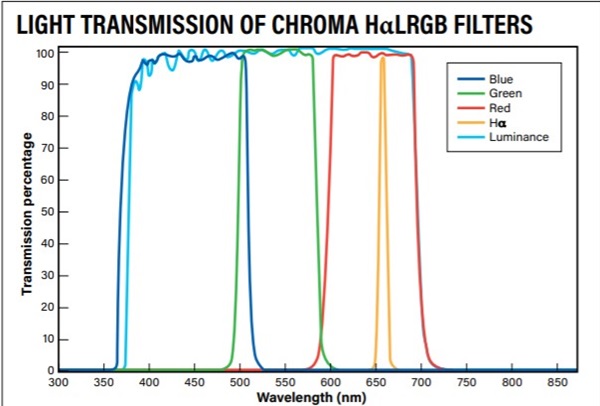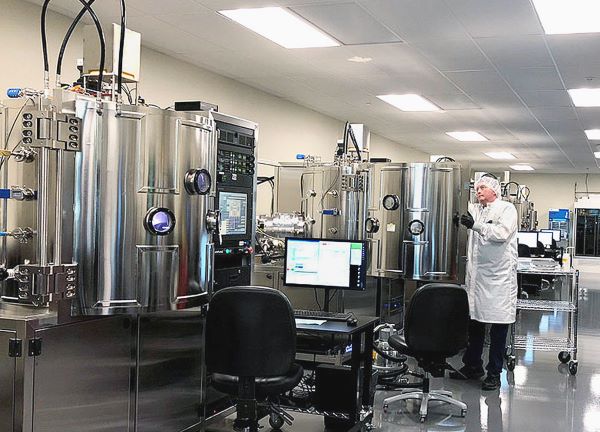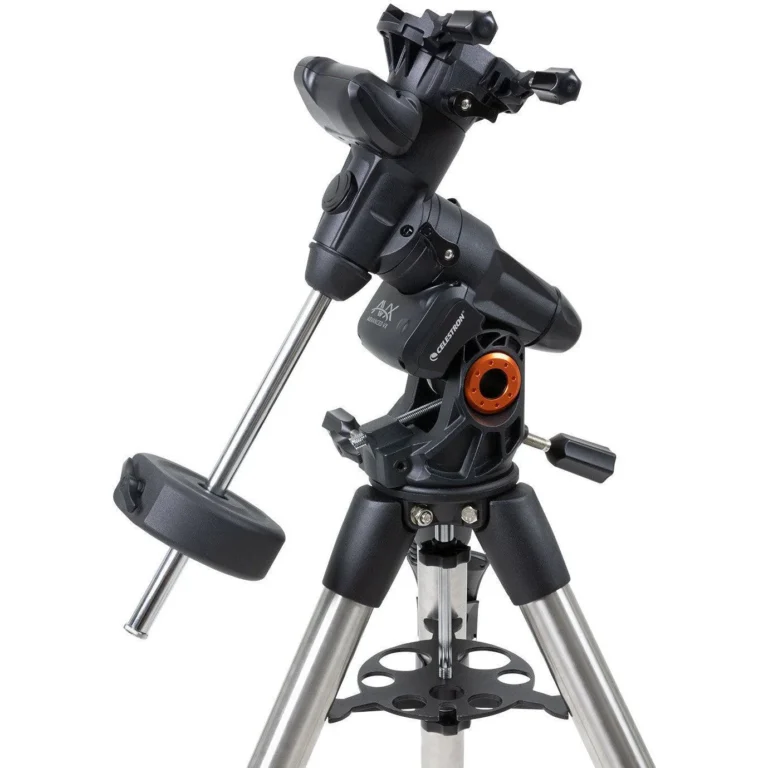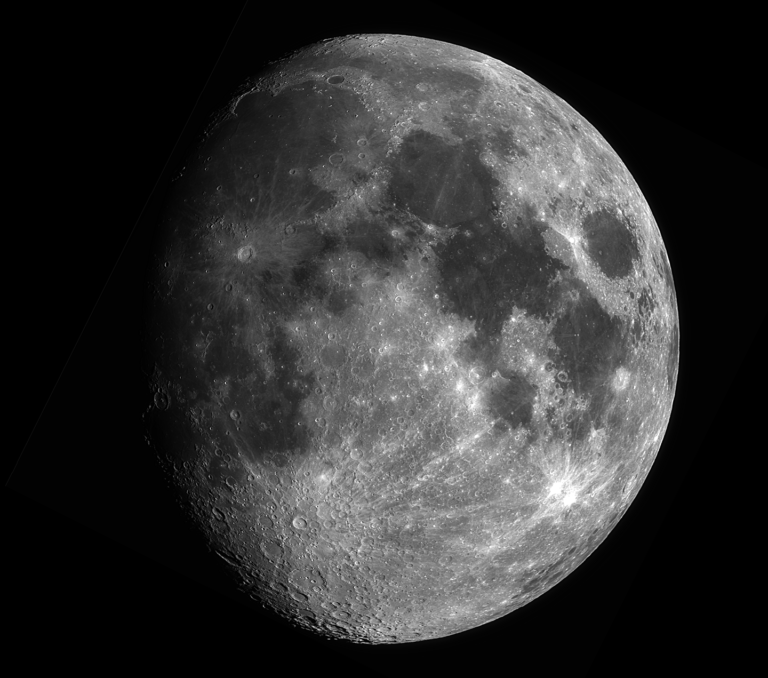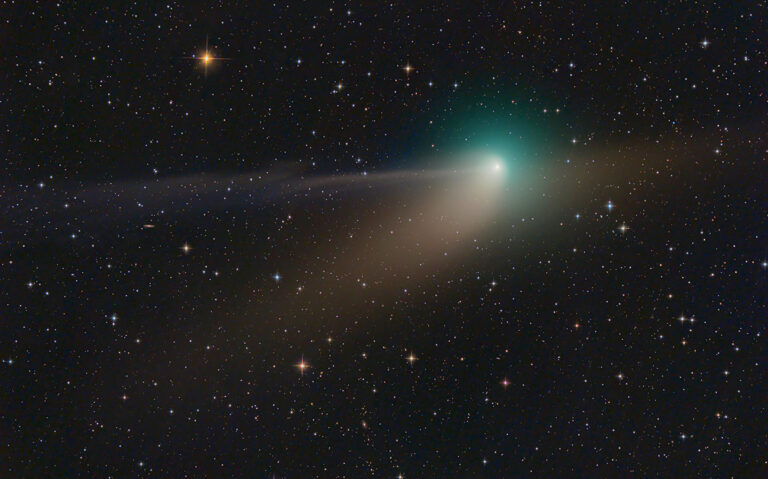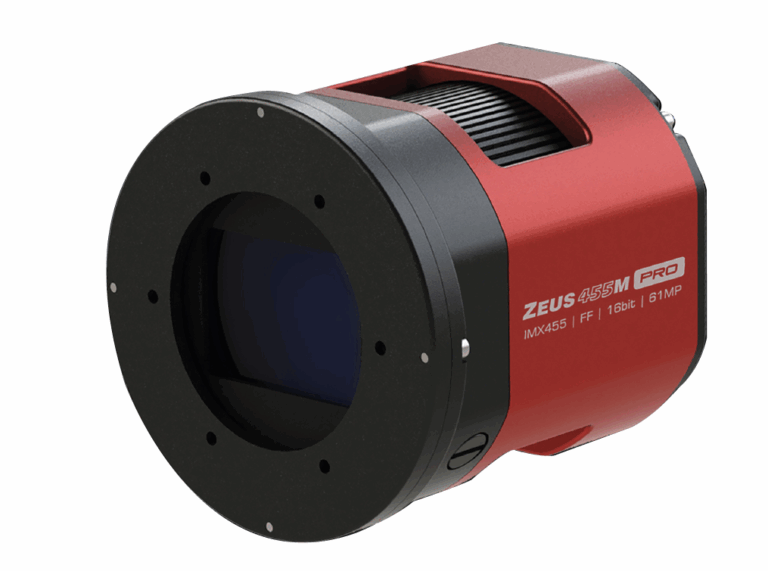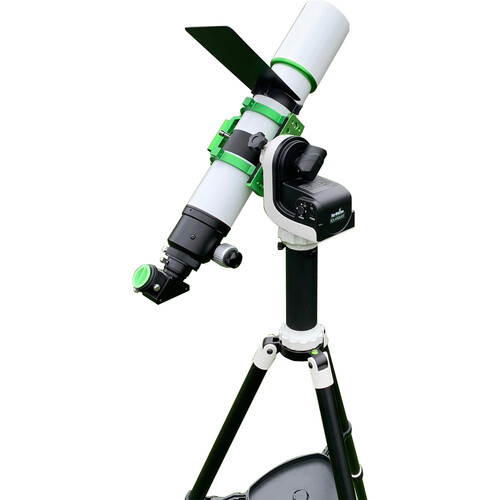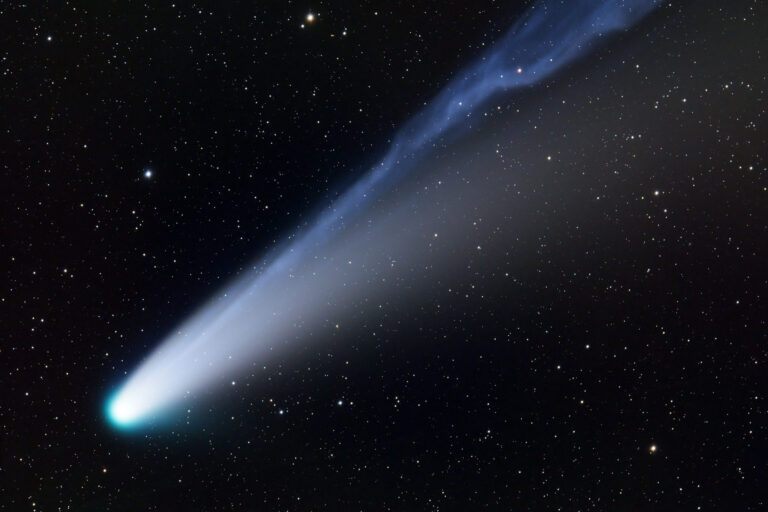Key Takeaways:
An exceptional coating
One of the best features of Chroma filters is their coating. The company applies a primary coating to the front surface of all their filters, as well as an anti-reflection coating on the rear surface that prevents ghosting and maximizes light transmission. When you look at a Chroma filter, the front side is highly reflective, while the back side appears completely transparent. Chroma’s standard filters can be used in optical systems as fast as f/4. Or, you can order special filters for systems as fast as f/2. Either way, Chroma offers them all in the standard sizes: 1.25-inch and 2-inch round, and 50-millimeter square.
Unlike the filters from many other companies, Chroma makes theirs by first coating 8-inch squares of optical-quality glass before they cut the filters to the desired size and shape. This ensures the coating is as even as possible, right to the very edge of the filter. (Filters cut before coating frequently have a thinner coat at the edge, due to the filter resting on a support during the coating process.) Finally, to prevent reflections and seal the outside of the coated and cut filter, a black edge is applied.
Chroma filters use optical interference coatings to ensure that only the right light passes through. These coatings get their unique microstructure thanks to a specific arrangement of layered materials that have different refractive indices. This helps interference coatings efficiently transmit the light you want, while blocking the light you don’t.
Filters built to last
Older filters were made with “soft” coatings that tended to absorb moisture, which caused them to deteriorate over time. But to combat moisture-induced decay, modern Chroma filters have a “hard” coating on the front and an anti-reflection (AR) coating on the back. The net result is a very high light transmission rate, accompanied by an extreme reduction in ghosting.
In 95 percent of telescope systems, you will not notice a difference between the front and back of a filter. But, technically, the AR side should be facing the sensor. In Chroma filters, this side can be easily identified because you can look right through the AR side into the filter. The front side, on the other hand, is highly reflective to prevent unwanted light from passing through.
The coatings can correspond to quarter wavelengths, full wavelengths, or multiple wavelengths of light, depending on the transmission characteristics of the filter. The coatings are applied within vacuum chambers using energized plasma clouds, which makes them incredibly durable and able to withstand extreme humidity and temperature swings. All of the company’s astronomical filters are also parfocal, meaning you can easily swap filters without adjusting the focus.
Chroma passes the test
To confirm the accuracy of their filters’ transmission characteristics, Chroma uses spectrophotometers that check for uniformity across the coated substrate. Further quality-control procedures include measurements of dimension, scratch and dig, parallelism, and wavefront error. All filters come with a printed test report detailing their exact performance. Narrowband filters are available in 8-, 5-, or 3-nanometer bandpasses.
Chroma filters offer both amateur and professional astroimagers the very finest quality and performance at a reasonable cost. In fact, I personally use them in my PlaneWave CDK17 and SBIG STX-16803 setup, and I think my recent images are a testament to their excellence


